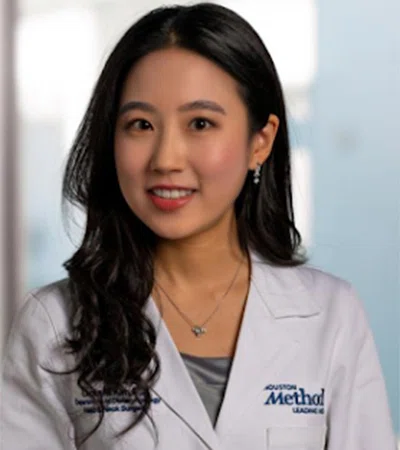

Archives
When Art and Science Meet: Microvascular Reconstruction

Laura Minhui Kim, MD, MSc
In microvascular reconstructive surgeries, Laura Minhui Kim, MD, MSc’s, creative eye is essential. Her techniques help restore function to donor tissue while maintaining cosmesis. This was of particular importance to Anthony Hood, a 63-year-old healthy male presenting with asymptomatic angiosarcoma.
“For this type of cancer, it needs to be removed with a wider margin of healthy tissue to ensure that it doesn't come back locally or regionally,” explained Dr. Kim, a Head and Neck Oncology and Reconstructive Surgeon. “However, removing the tumor would leave Mr. Hood with a large defect on his scalp.”
To address this defect, Dr. Kim harvested donor tissue from the latissimus dorsi muscle, carefully ensuring blood vessels within the donor tissue remained intact. The tissue was then placed on the scalp, where she re-established “plumbing” – or blood flow – to the patient’s skin graft. Then she expressed her artistic side.
1
Asymptomatic angiosarcoma is removed with a wide margin to ensure the cancer doesn’t come back locally or regionally.
2
Blood flow is re-established with the patient’s skin graft.
3
The final result restores the patient to their previous state as close as possible.
“Without additional shaping, the donor tissue can almost look like a meat helmet or appear lopsided,” the Assistant Professor of Otolaryngology said. “In this patient’s situation, being otherwise healthy and concerned about cosmesis, I spent extra time contouring the donor tissue. In other cases, however, cosmesis is a second objective.”
Hood was able to undergo radiation and is now under cancer surveillance.
“This case highlighted my passion to make patients look as close to their previous state as possible because I know it affects their social life, psyche, and mood, which in turn affects their recovery,” she said. “As cancer surgeons, we should try to optimize aesthetics where possible.”






